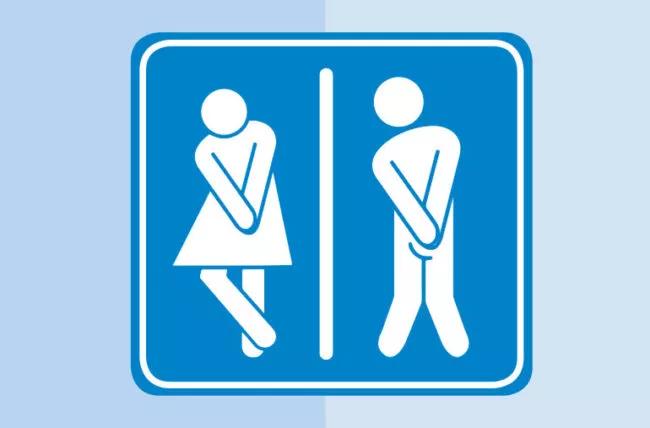
An estimated 39 million Americans live with overactive bladder (OAB) symptoms but most are reluctant to ask for help. One national study found that two-thirds of surveyed women who experience bladder leakage hadn’t spoken about the problem with a doctor. This patient hesitancy is only one barrier to the care continuum for idiopathic OAB which spans conservative therapies to minimally invasive treatment options.
Advertisement
Cleveland Clinic is a non-profit academic medical center. Advertising on our site helps support our mission. We do not endorse non-Cleveland Clinic products or services. Policy
First line treatments for OAB consist of behavioral modification, including pelvic floor muscle exercises, bladder training, and limiting bladder irritants, among other conservative approaches. Studies demonstrate that these interventions can be effective for reducing OAB symptoms, including urge incontinence and voiding frequency.
“Primary care physicians can help start these important conversations by asking patients about bladder control issues and assuring them urinary incontinence symptoms are very common and treatable,” says Sneha Vaish, MD, a board certified urologist at Cleveland Clinic Florida and specialist in female pelvic medicine and reconstructive surgery.
Antimuscarinic agents are used to relax the bladder muscle and have long been the standard of care when behavioral interventions fail to adequately control OAB symptoms. These anticholinergic medications are also sometimes used in conjunction with first line therapies.
More recently beta-3 adrenoceptor agonists have been added to the OAB arsenal. They provide an alternative to antimuscarinics or can be used in combination. While some patients find symptom relief with these pharmacological therapies, a recent study found that less than half of patients with OAB symptoms received an OAB-related medication.
“Even when patients do try an OAB medication, research has shown that adherence is poor,” notes Dr. Vaish. “I’ve found that when the first medication a patient tries does not control symptoms or causes bothersome side effects, they are less inclined to try others. Instead, they decide that they just have to live with their symptoms.”
Advertisement
Dr. Vaish points to polypharmacy as another challenge for patients with OAB, especially older patients with multiple chronic conditions. “These patients often take several medications with anticholinergic properties which can lead to an increased risk of cognitive impairments and dementia,” she says.
There is good news for patients who do not achieve symptom relief with first and second line therapies. Third line therapies — Botox® for the bladder and neuromodulation — have demonstrated efficacy rates of 50-80%, depending on the treatment. But only 4% of patients reach this part of the care continuum, according to a Cleveland Clinic study.
Advertisement
A number of treatment advancements have been made since the first SNM device was approved by the Food and Drug Administration in 1997. Today it enjoys one of the highest OAB treatment success rates, achieving 60-80% efficacy.
“Because the generator portion of the device is thinner and smaller, it now can be placed nearly percutaneously,” explains Dr. Vaish, who instructs 40-50 physicians a year in how to perform the procedure. “We’ve also improved lead placement techniques by following along more closely with the curvature of the third sacral nerve. We achieve better contact through positioning of the four electrodes which lessens the voltage needed to achieve a response.”
Among other device improvements are longer-lasting batteries, including a newly released 10-year battery and 15-year rechargeable battery, MRI-compatibility, and much smaller, handheld programmers used to remotely control power.
While some patients do well with conservative and medical management, others may benefit from these minimally invasive third line therapies. “Older patients, especially individuals with multiple chronic conditions, can find relief from their symptoms and improved quality of life,” adds Dr. Vaish.
Advertisement
Advertisement

Cleveland Clinic Weston Hospital’s collaborative model elevates care for complex lung diseases

Interventional pulmonologists at Cleveland Clinic Indian River Hospital use robotic technology to reach small peripheral lung nodules

Trained in the use of multiple focal therapies for prostate cancer, Dr. Jamil Syed recommends HIFU for certain patients with intermediate-risk prostate cancer, especially individuals with small, well-defined tumors localized to the lateral and posterior regions of the gland.

Cleveland Clinic Weston Hospital is actively recruiting patients for an international, multicenter, phase III study comparing MIS versus open interval cytoreduction following neoadjuvant chemotherapy in patients with stage IIIC-IV epithelial ovarian cancer.

Urologic oncologist with Cleveland Clinic in Florida performs robotic-assisted retroperitoneal lymph node dissection.

Cleveland Clinic researchers in Florida identify unexpected survival benefit

Noninvasive, radiation-free imaging supports treat-to-target IBD care

Cleveland Clinic in Florida transplant specialists perform advanced surgical approach for living kidney donation